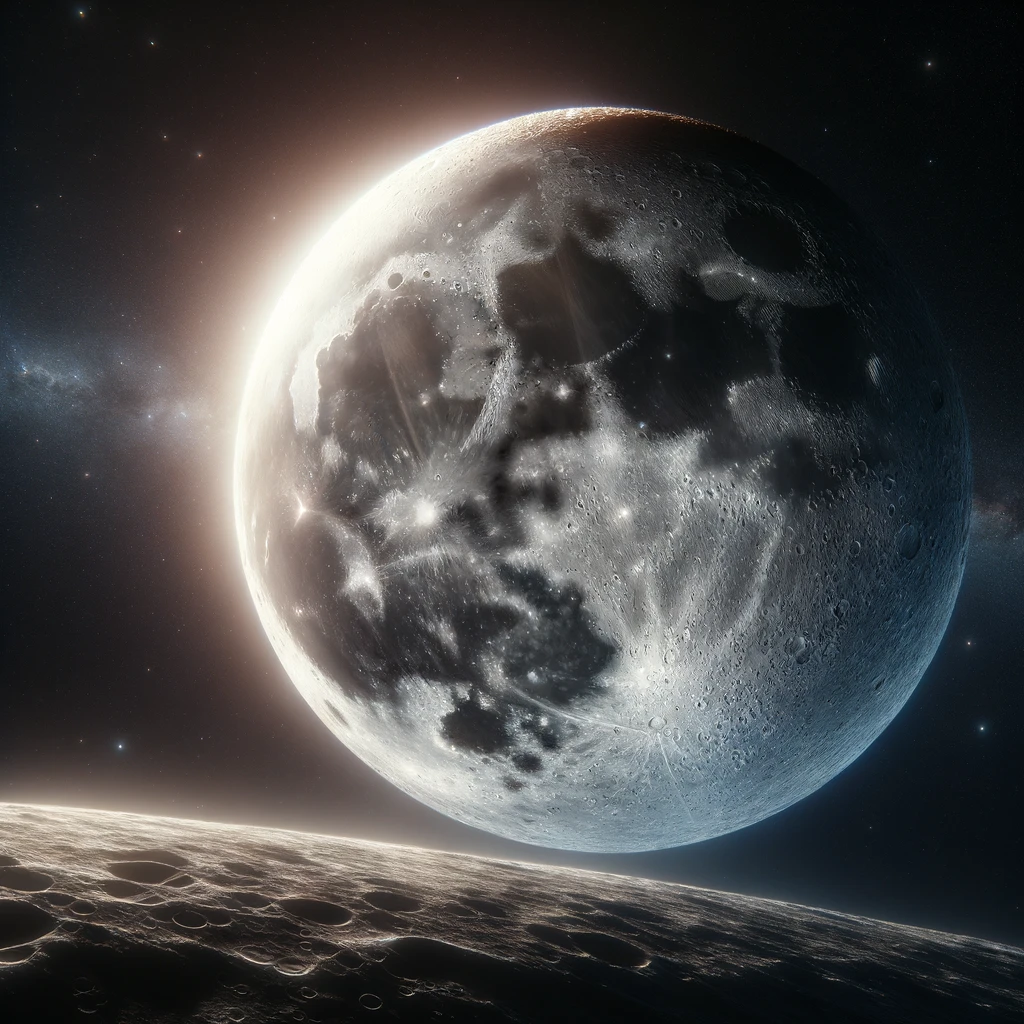The Moon, Earth’s only natural satellite, has fascinated humanity since time immemorial. A beacon in the night sky, it has inspired myths, guided explorers, and advanced our understanding of the cosmos. This article delves into the Moon’s characteristics, its formation, its role in Earth’s natural phenomena, and the history of lunar exploration.
Physical Characteristics
The Moon is a relatively small celestial body, with a diameter of about 3,474 kilometers—about a quarter of Earth’s. Its surface, as observed from Earth, features a mix of dark lunar maria (basaltic plains) and lighter highlands, pocked with craters from billions of years of asteroid impacts. The Moon lacks a significant atmosphere, which means no weather and a sky that is always black.
Formation
Scientists believe the Moon formed about 4.5 billion years ago, shortly after the Earth. The prevailing theory suggests a Mars-sized body collided with the young Earth, ejecting debris that eventually coalesced into the Moon. This violent origin explains many of the Moon’s characteristics, including its composition and the impact of its gravitational pull on Earth.
Influence on Earth
The Moon exerts a significant influence on Earth, most visibly through the tides. Its gravitational pull on Earth’s oceans causes the regular rise and fall of sea levels known as tides. Additionally, the Moon stabilizes Earth’s tilt, which helps maintain a relatively stable climate over geological timescales.
Exploration and Study
Humanity’s fascination with the Moon has led to its exploration through telescopes, uncrewed probes, and, most notably, the Apollo missions of the 1960s and 1970s. The first human to set foot on the Moon was Neil Armstrong, on July 20, 1969, during the Apollo 11 mission. This era of exploration brought back lunar rocks and soil, which have provided invaluable information about the Moon and the early solar system.
Future Missions and Settlement
The future of lunar exploration includes plans for uncrewed missions, human landings, and even permanent bases. Nations and private companies alike aim to utilize the Moon’s resources, such as water ice in permanently shadowed craters, which could support future astronauts and potentially fuel for deep space missions.
Conclusion
The Moon remains an object of scientific inquiry and human curiosity. As technology advances, our understanding of the Moon continues to grow, promising new insights into our place in the universe and opening the door to the next era of space exploration.
